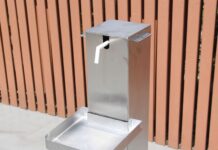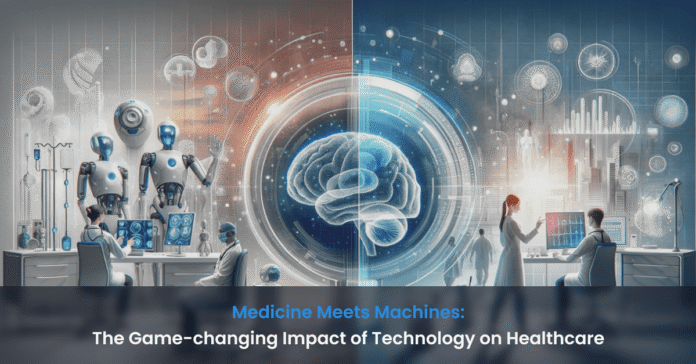Medicine and technology have never left each other, yet to this extent. Healthcare is being transformed into an end-to-end process, whether through artificial intelligence solutions by Codeflash Infotech, robotics, wearable devices, consumer treatments, or other innovations. This is how this revolution is shaping up in clinics, hospitals, labs, and even your living room.
From Records to Algorithms: A Shift in Perspective
Much less than 50 years ago, medical notes were etched in paper and kept in filing cabinets. Physicians were sometimes relying on trial and error as well as instinct. Diagnoses were slow, treatments tended to be generic, and there were plenty of mistakes.
Now imagine fast-forwarding to today. Hospitals are data-intensive. Algorithms are helpful when it comes to diagnostics. With an electronic health record, it takes only a few seconds to get a full history of a patient. Digital transition has established the basis of smart, faster, and more personal medicine.
This jump did not occur the next day. The medical data have become powerful insights only because of new computing power, cloud storage, and artificial intelligence. Machines now do not only keep information but also assist in interpreting it.
Artificial Intelligence in Diagnosis and Prediction
The field of AI has become one of the most promising change catalysts in the healthcare sector. Discover how Codeflash develops intelligent AI tools to support diagnosis and prediction. The AI-based technologies may process petabytes of data and find the trends that the human brain would not locate.
AI is to be used in diagnostics to:
- Analyze X-rays, CT scans, and MRIs for early signs of diseases like cancer, pneumonia, and neurological disorders.
- Detect eye diseases from retinal scans, with accuracy comparable to top specialists.
- Interpret mammograms and ECGs to flag subtle abnormalities.
AI is also used in predictive healthcare. For example, it can calculate the likelihood of a patient being readmitted, experiencing a stroke, or developing diabetes based on historical data and current vitals. This helps doctors intervene early, sometimes even before symptoms appear.
Importantly, AI doesn’t replace doctors; it enhances their ability to make data-backed decisions faster and with greater accuracy.
Robotic Technology in Surgery and Patient Care
Robots in healthcare are no longer futuristic fantasies—they’re in operating rooms, rehab centers, and eldercare facilities right now.
Surgical robots like the da Vinci system allow doctors to:
- Perform minimally invasive procedures with extreme precision.
- Reduce recovery time due to smaller incisions.
- Achieve lower complication rates, even in complex operations.
Outside the OR, robots are being used to:
- Help stroke survivors regain movement through repetitive, precise rehabilitation routines.
- Deliver supplies and medications inside hospitals, reducing staff workload.
- Assist elderly patients with mobility, hygiene, and social interaction, especially in countries with aging populations like Japan.
These machines are improving both clinical outcomes and the overall efficiency of care, especially in environments with high patient volume or limited human resources.
The Rise of Remote Monitoring and Telehealth
COVID-19 changed healthcare in many ways, but perhaps the most visible impact was the surge in telemedicine. During lockdowns, virtual consultations became essential, and now they’re here to stay.
Today, patients can consult with doctors from home, receive prescriptions electronically, and even send real-time data from wearable devices to their care teams.
Remote monitoring devices now track:
- Blood pressure and blood sugar levels.
- Heart rate, ECG, and oxygen saturation.
- Sleep cycles and activity levels.
These tools enable doctors to monitor chronic conditions like diabetes or hypertension remotely, reducing the need for hospital visits and catching issues early.
This isn’t just convenient, it’s life-saving for rural populations, elderly patients, and those with mobility limitations. Healthcare is no longer limited by geography or availability. Machines have truly made care more accessible.
Precision Medicine: Healthcare, Tailored to You
Everyone’s body is different. So, it makes sense that treatment should be, too. Precision medicine is all about tailoring care to the individual, based on genetics, lifestyle, and environment.
This approach is now becoming a reality thanks to:
- Genomic sequencing which allows doctors to understand how your genes affect your health and how you respond to medications.
- AI algorithms that analyze this data to recommend the best course of treatment.
- Targeted cancer therapies which attack tumors based on their genetic structure rather than using general chemotherapy.
What Happens to Healthcare Professionals?
With all this technology, where do doctors, nurses, and technicians fit in?
The answer is: right in the center.
Machines may assist, but only humans can provide empathy, build trust, and make judgment calls based on more than data. The doctor-patient relationship remains sacred.
At the same time, healthcare professionals are evolving:
- Doctors are learning to interpret AI-generated reports.
- Nurses are managing digital tools and educating patients on their use.
- Medical students are now learning coding, data science, and digital health as part of their curriculum.
Conclusion
Medicine and machines are not in competition; they’re collaborators. Together, they’re creating a world where care is smarter, faster, more accurate, and more accessible.
As long as we keep empathy, ethics, and inclusivity at the core, this revolution will not only cure diseases it will elevate the human experience of healing.























